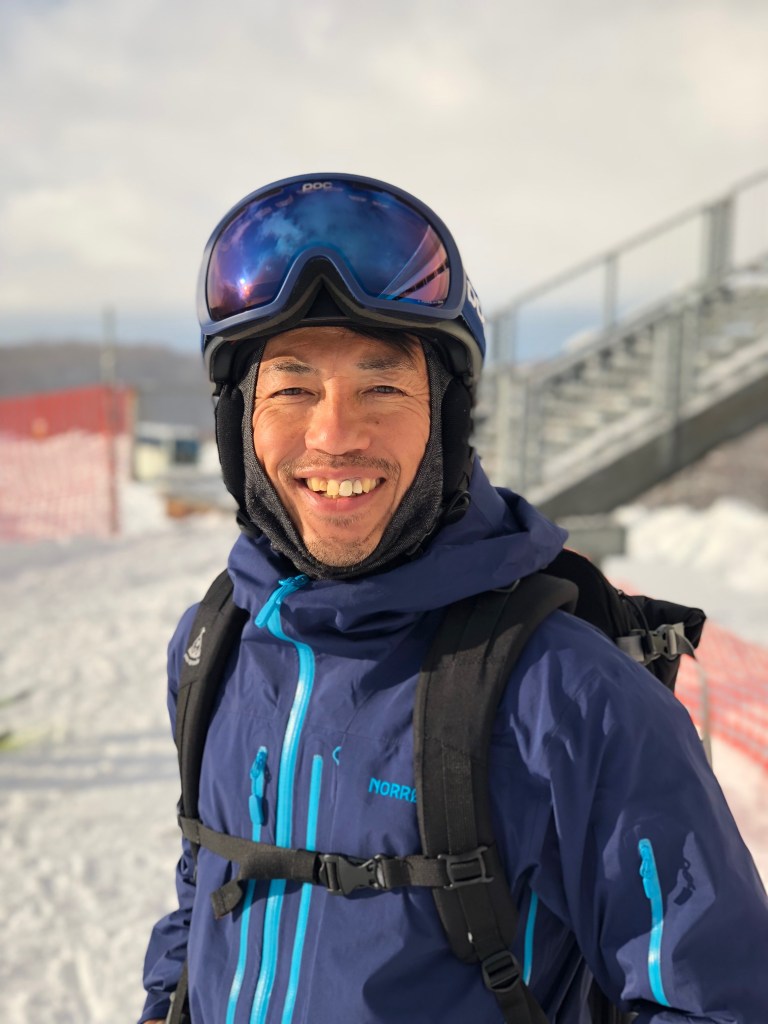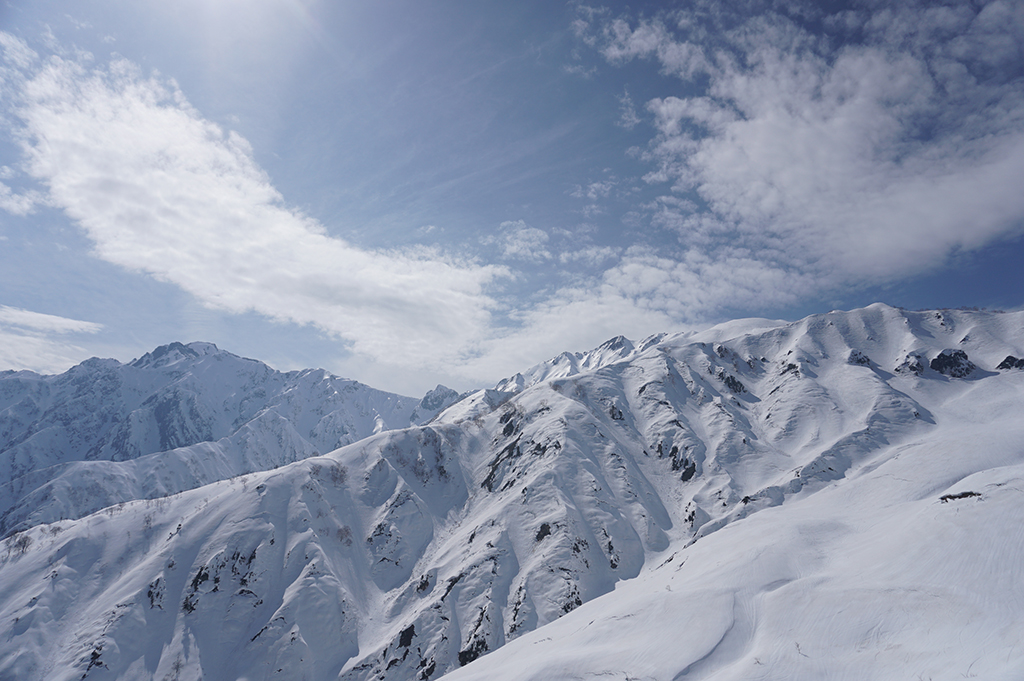In April, the mountains are quite spring mode.
I often hear that "spring is a great season for backcountry skiing and snowboarding." From the midwinter powder season to the spring backcountry, I want to continue to enjoy skating! So, I asked a professional guide to tell me the background that spring is a good time to go out in the backcountry.
The person who taught me: KinTouN Kenichi Minegishi
Why is spring suitable for backcountry skiing? The difference between winter and winter
1. Significant differences in the length of daylight hours
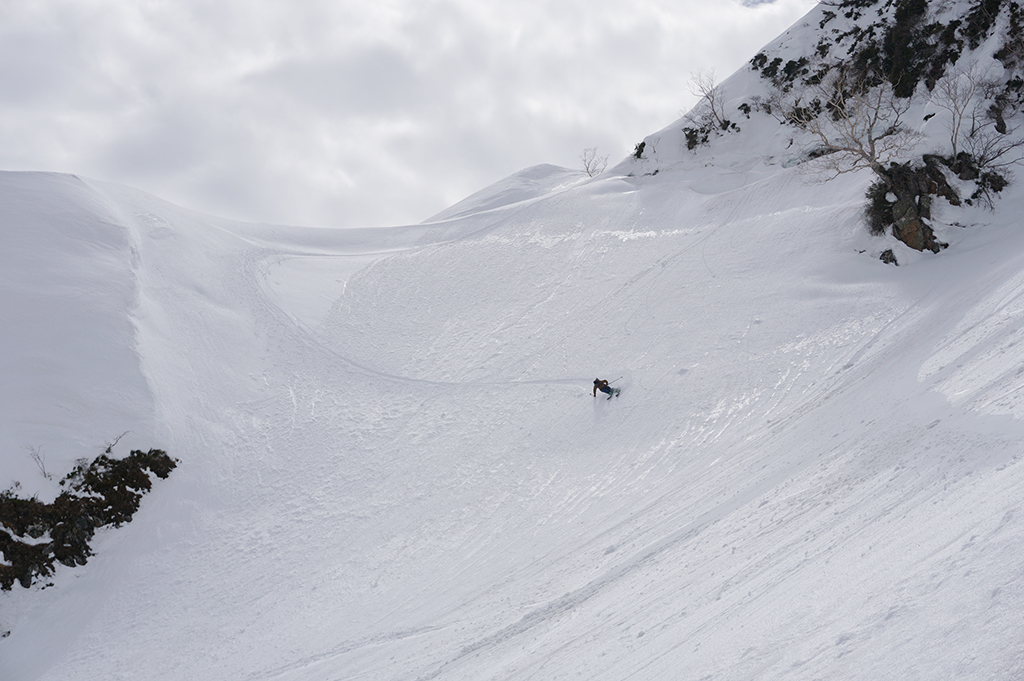
In spring, the sun rises earlier and the daytime is longer than in winter.
By the way, the sunshine duration of the summer solstice (around June 20), when the sun is at its highest point of the year, is 15 hours and 35 minutes in Tokyo, while the winter solstice, when the sun is at its lowest point, is 9 hours and 45 minutes. is 5 hours and 50 minutes. Since the sunshine hours are much longer than in winter, the action time in the mountains will be longer. The brightness itself is also completely different. As a result, there is room for action, it is easy to move, and it is also advantageous in terms of safety. And the more time you have, the more you can go deep into the mountains. It can be said that this is one of the big reasons why spring is the best.
2. Easy to understand snow conditions
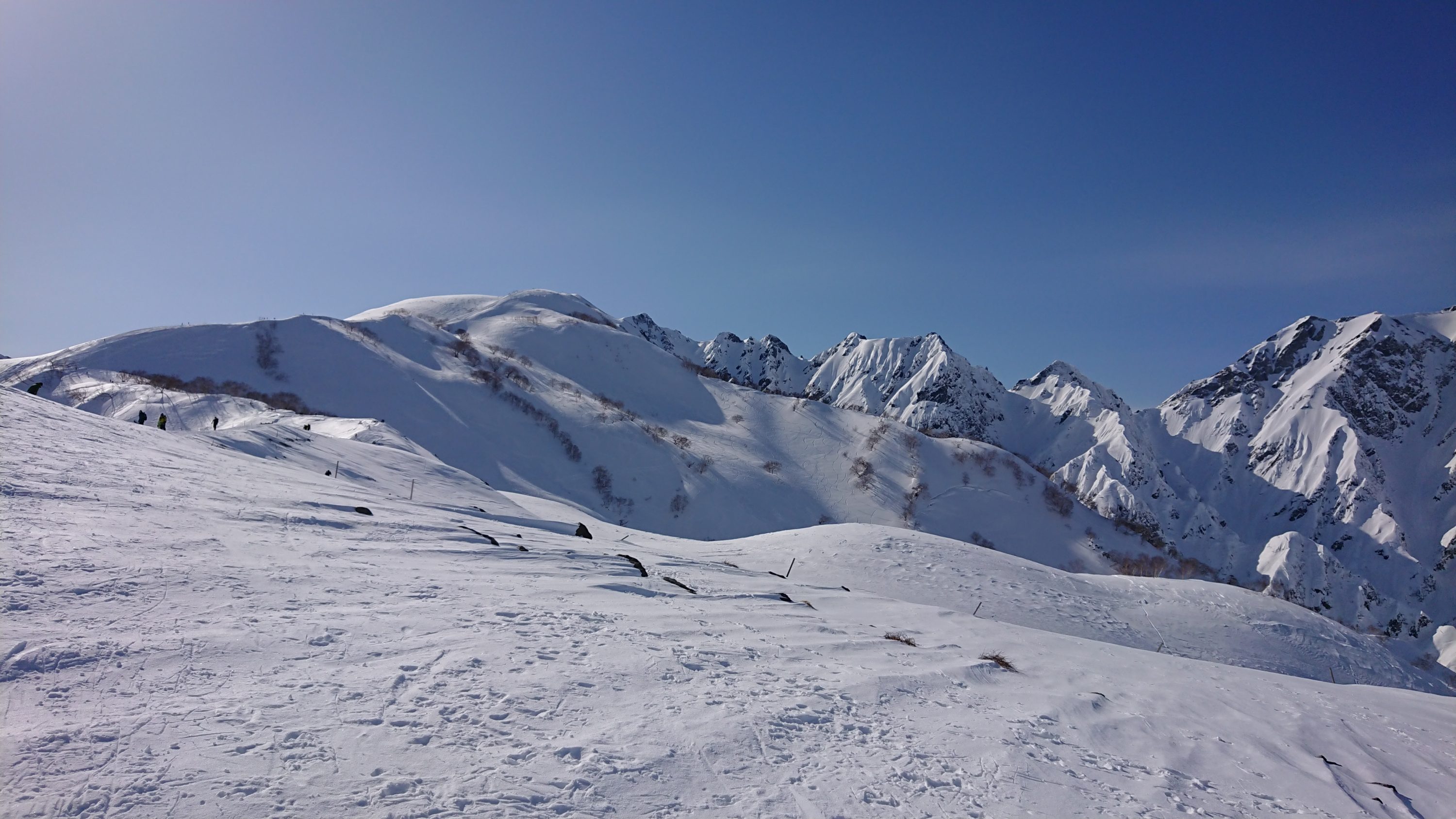
In terms of judging slippery slopes, the snow quality is clearer in spring, so it's easier to grasp the snow conditions. There is also a change in the selection of skis, such as those with high operability are more suitable than big fats for obtaining buoyancy in powder.
3. Stable weather reduces the risk of surface avalanches and getting lost
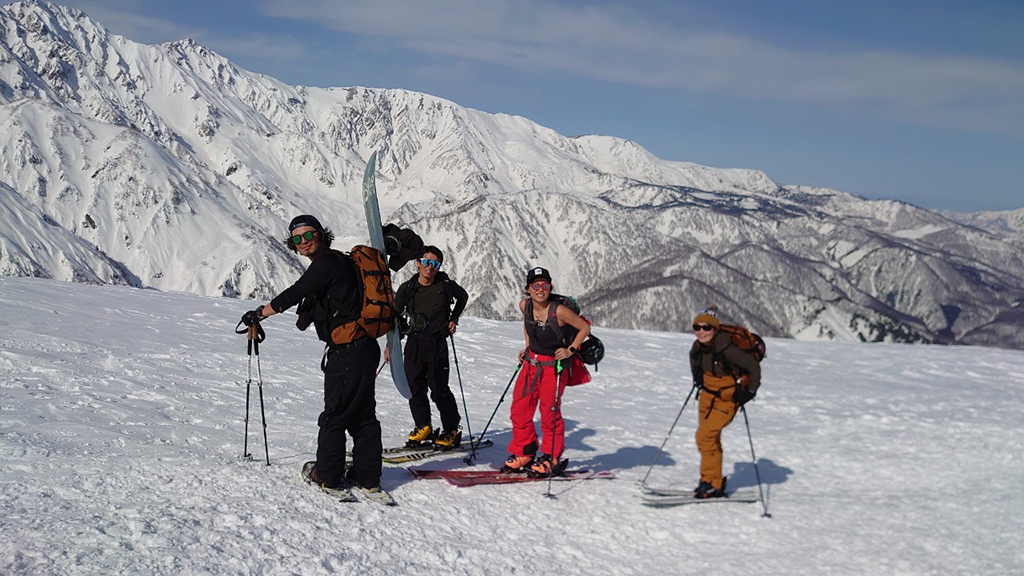
A surface avalanche is when snow piled up on a weaker layer within the snowpack collapses. In April, the weather tends to be more stable than in the high season, so the risk of surface avalanches is less than in winter, when new snow piles up frequently. Mountain weather is a must, but in May, snowstorms are rare. The risk of getting stuck in a whiteout due to poor visibility or getting lost due to poor visibility is reduced.
However, be careful in rainy weather. Due to the rapid melting of snow caused by rain, snow bridges often crack or fall through holes hidden in them. There is also a risk that the river will rise. Even if it rains at the foot of the mountain, it often snows as you ascend to higher elevations. You should also pay attention to changes in snow quality. If the weather is questionable, you'll want to have a change of base layer on hand to avoid hypothermia if you get wet from the rain.
4. By opening closed roads, it is possible to easily access long distances, increasing the number of slopes that can be skied.
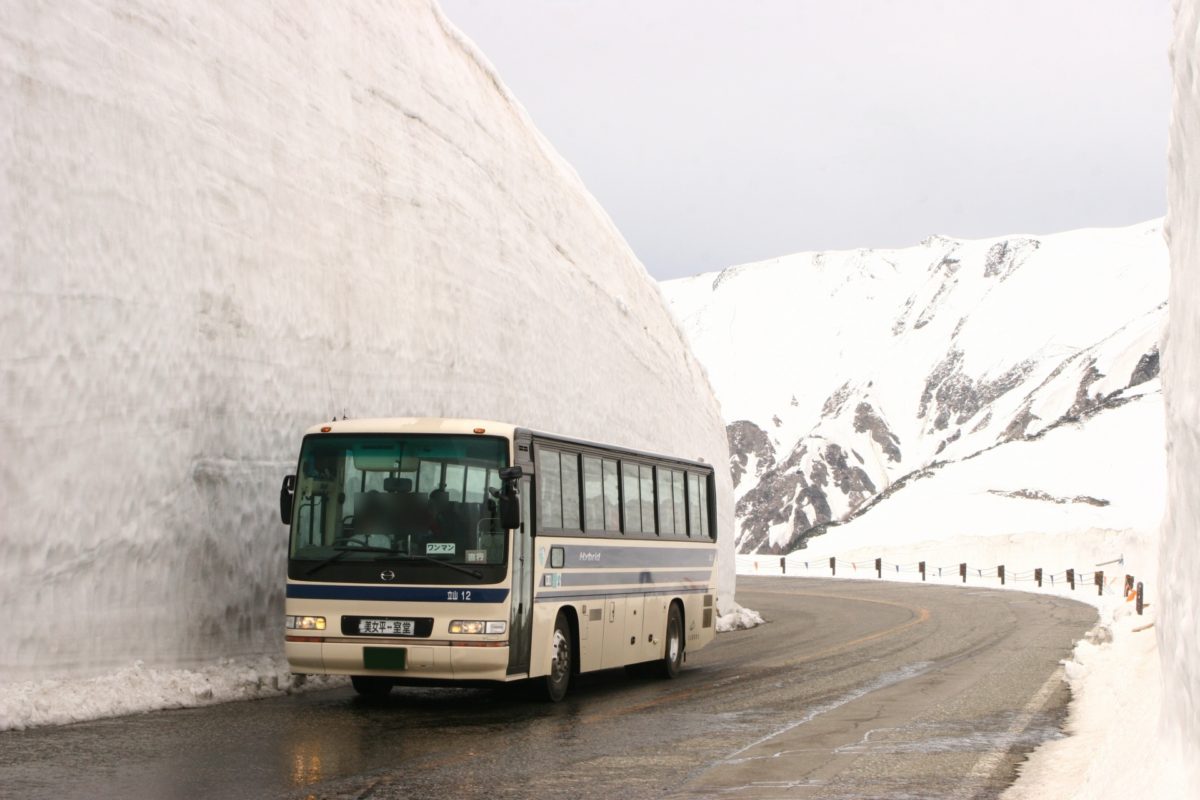
In spring, the roads that are closed in winter gradually open up, so slopes that would otherwise require 6 to 7 hours of walking in the middle of winter can be reached quickly by car. Therefore, the number of slippery slopes increases significantly compared to winter. The places you can go only after the roads that were closed in winter are opened will naturally become secluded areas, so you can feel the charm of the backcountry more. One of the big attractions of spring is being in the deep nature.
5. The snow becomes tighter and easier to walk
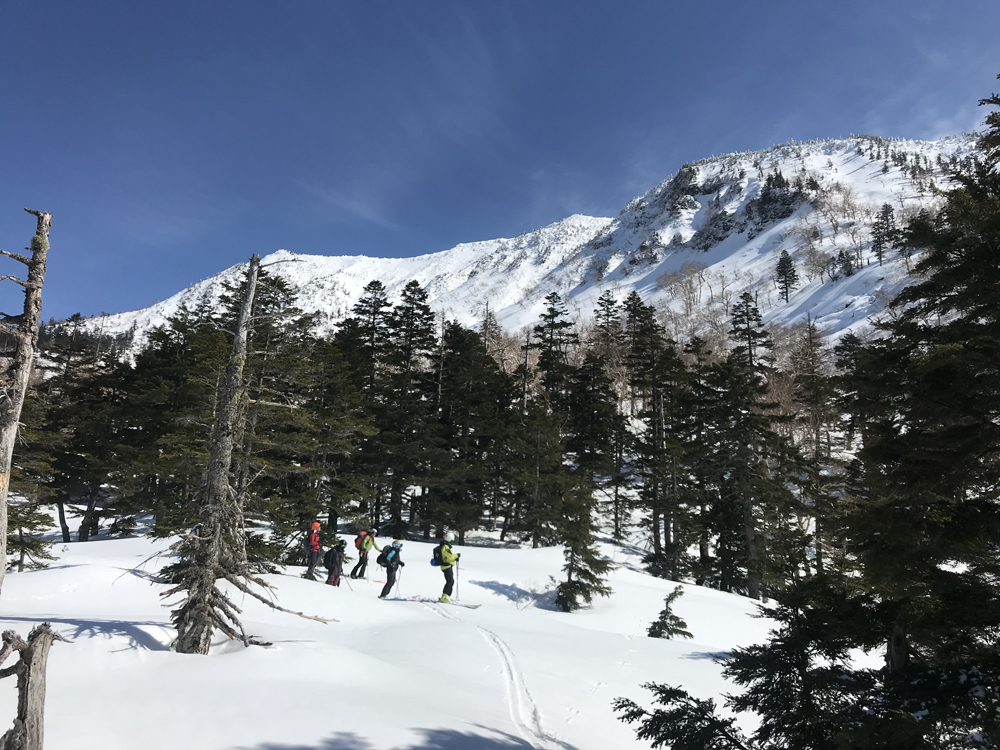
In the case of a guided tour for beginners in the middle of winter, the best time to hike is about one hour. Otherwise, participants will get tired. If it is after April, you can set it to walk for about 3 hours without hesitation. Even people who are new to the backcountry can easily walk in the spring. The good thing about spring is that you can walk a lot longer than in winter.
6. Even if you can't ski well on the powder, you can go anyway if you have the skills to ski on the slopes.
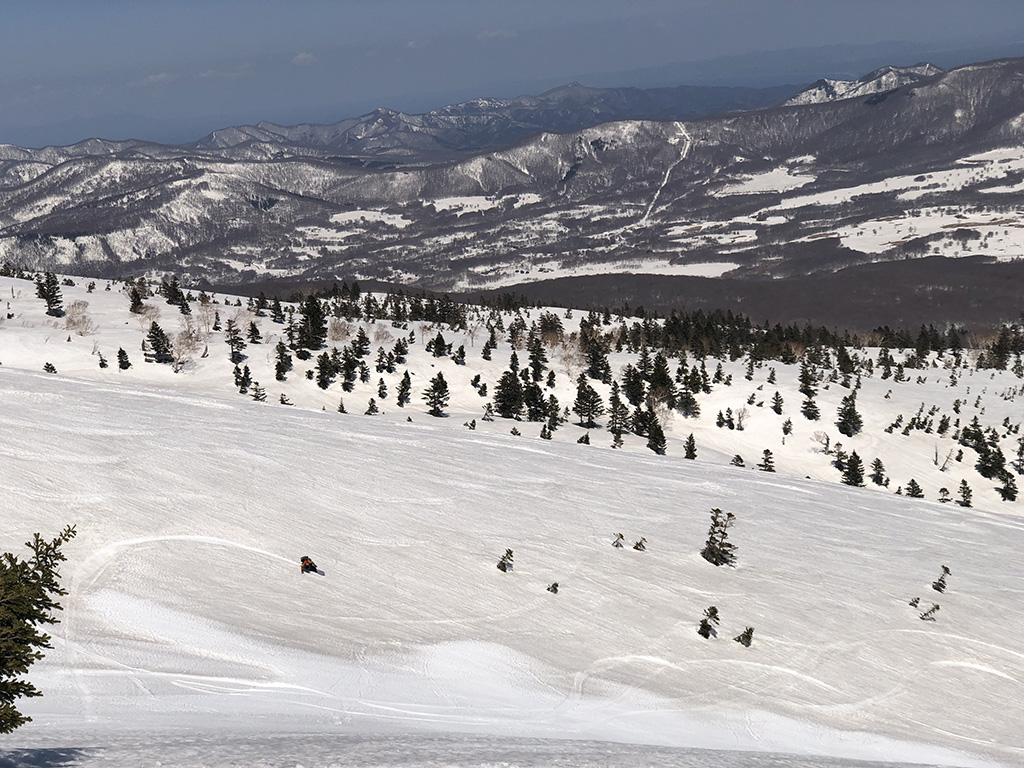
In spring mountains after April, there is almost no powder deep enough for skis to dive into, which means that even people who don't usually ski deep snow can easily try backcountry skiing. Even if you don't like powder or have no experience, if you have the skills to ski the slopes at a certain level, you can go. This is also a benefit unique to spring.
7. The terrain comes out in spring, so it's fun to change the natural terrain
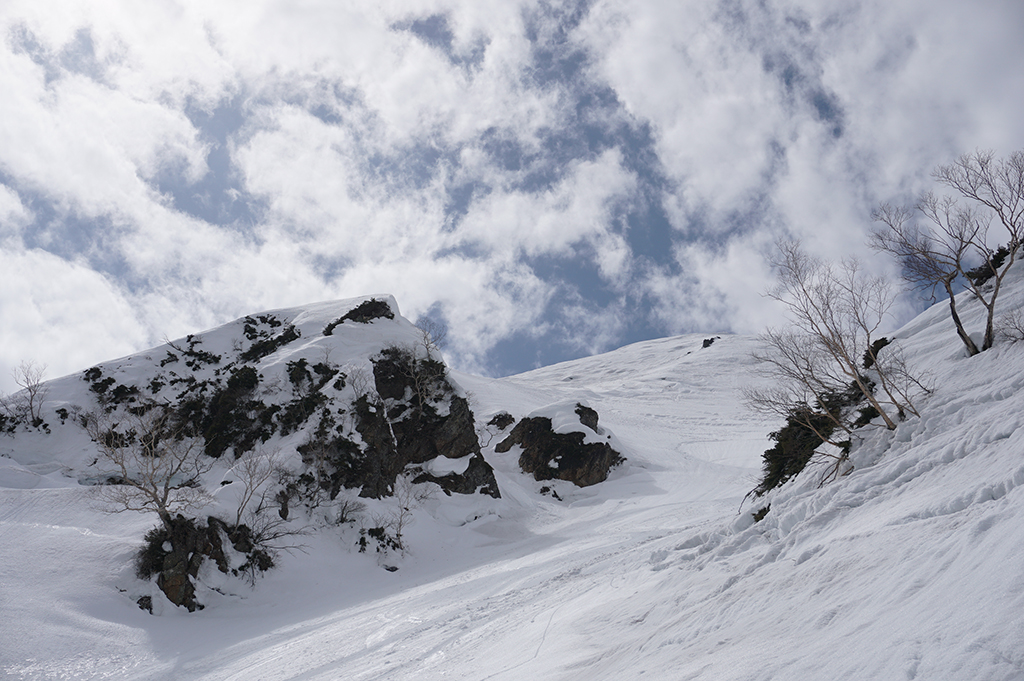
In spring, when the temperature gradually rises and the accumulated snow begins to melt, the natural topography comes to the fore. The enjoyment of skiing on varied terrain also increases in spring.

8. It's warm and comfortable even when you're moving or taking a break.
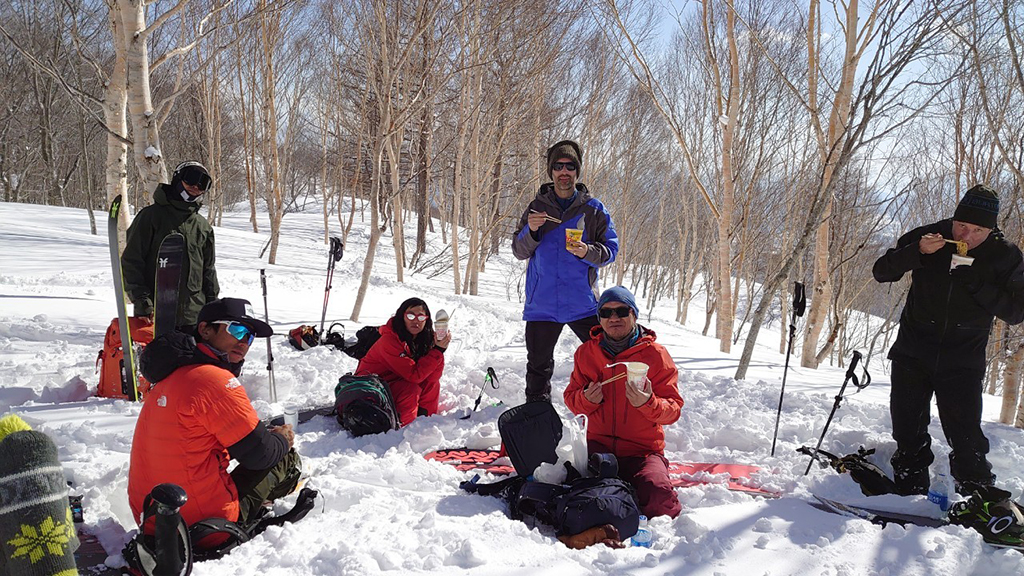
Whether you're traveling or taking a break, spring is warm and pleasant. In addition to skiing, snow trekking under the blue sky while admiring the natural scenery is also fun. You can have plenty of time because you can take action for a long time. For lunch, you can boil water and eat cup ramen, drink delicious coffee, and enjoy a fun picnic.
9. Use your day effectively and enjoy extra fun
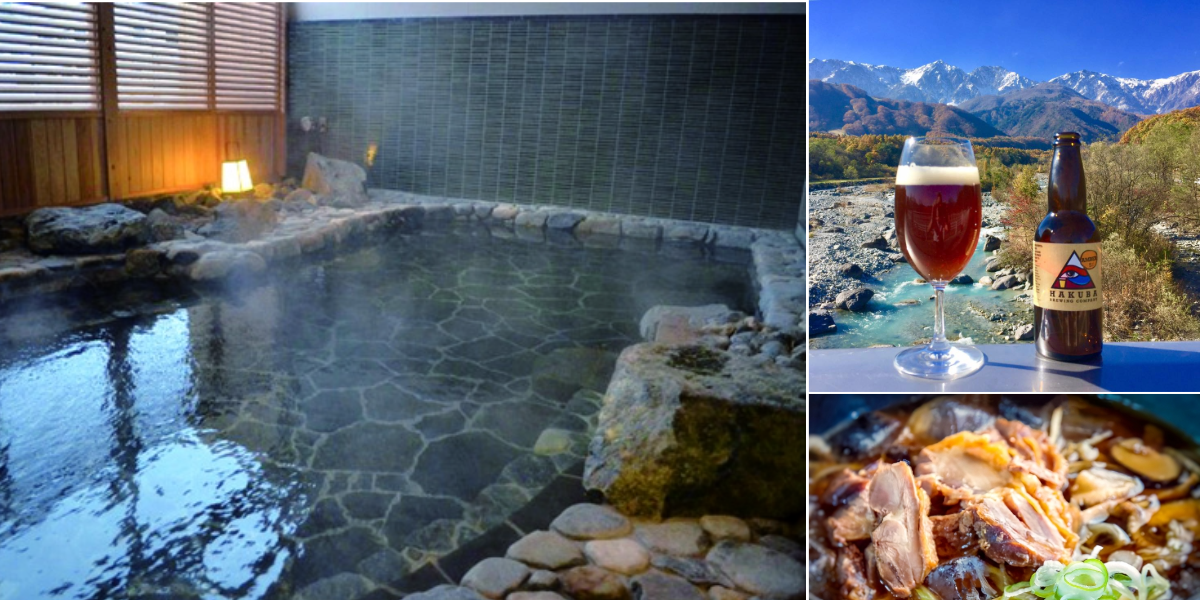
The longer the daylight hours, the more time you can use in a day. A long hike in the middle of the day can be hot and strenuous, so if you start early in the morning, you can enjoy plenty of skiing and be back down the mountain in the afternoon. Still, being able to play for about 6 hours is a big advantage of spring. In the afternoon, take a relaxing soak in the hot springs and enjoy delicious local cuisine and craft beer. One of the charms of spring is that it comes with a lot more fun than just skiing.
About spring backcountry equipment
Considering spring is the season, the equipment needed for going out into the backcountry may be slightly different from the high season. What would you like to add or adjust? Let's take a look at how to prepare for spring, focusing on basic equipment.
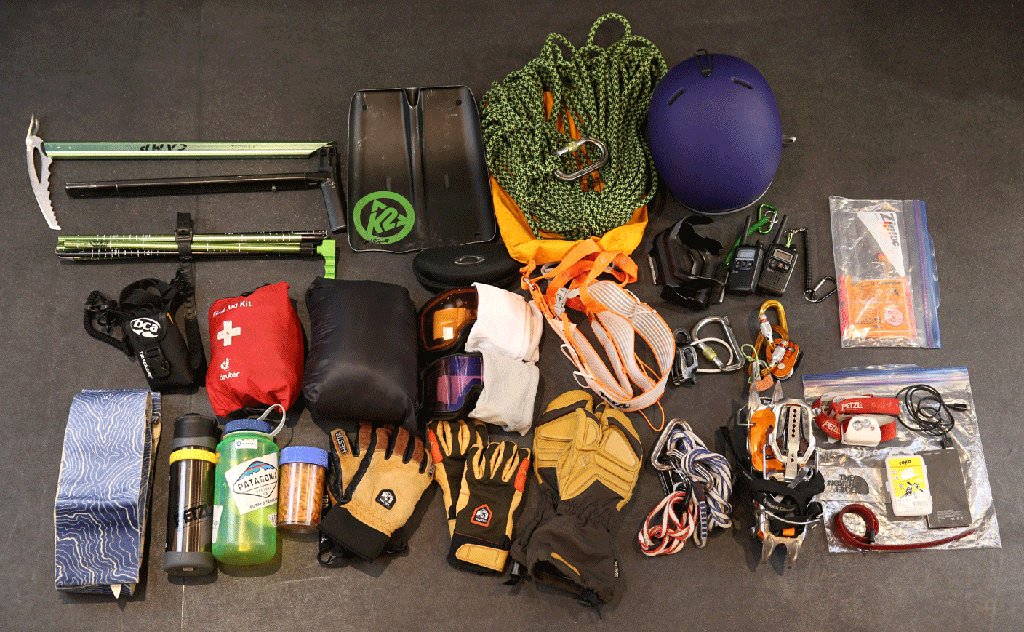
tools to add
The equipment is basically the same as in the middle of winter, but there is a possibility that ice cream will appear in spring, so if it is during April, I would like you to add ski crampons. As the days get longer, it gets hotter during the day, so tours sometimes start early in the morning around 6:00. Then the snow is often hard. Wearing crampons and starting walking early in the morning, hiking for a few hours, and enjoying the comfortable skiing when the snow loosens, such a pattern is also conceivable in spring.
wear
In Haruyama, the clothing situation and layering will be a little different. Wear a thin base layer and thin tights underneath. Then adjust accordingly with the ventilation of the shell. Depending on the timing, the weather can change suddenly and snow may suddenly fall, so it's a good idea to pack a thin ration in your backpack. By the way, I wear layers like this during the spring season.
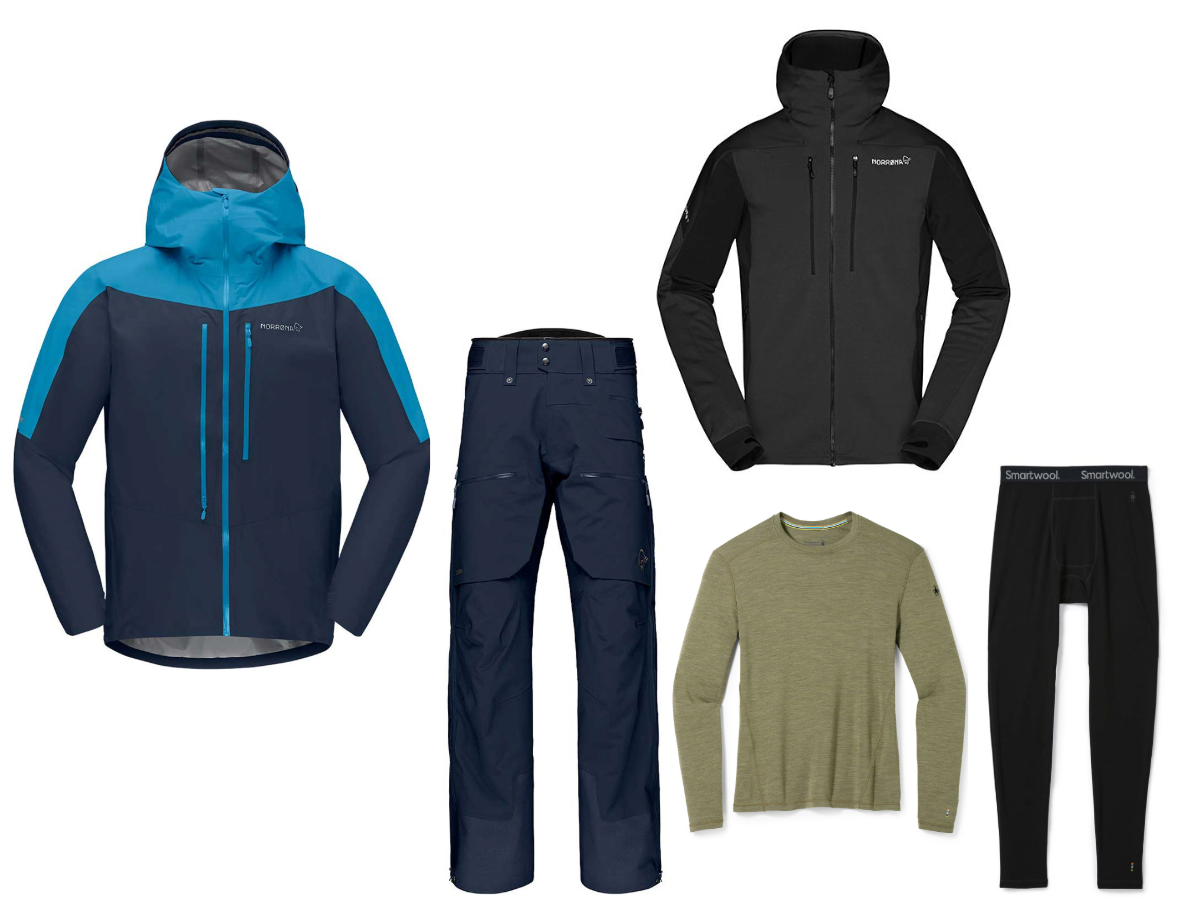
Outer layer: NORRONA | falketind Gore-Tex Paclite Jacket & lofoten Gore-Tex Pro Pants
Middle layer: NORRONA | trollveggen Powerstretch Pro Zip Hood
Base layer: Smartwool | Classic all-season merino base layer top and bottom
Other must-have items
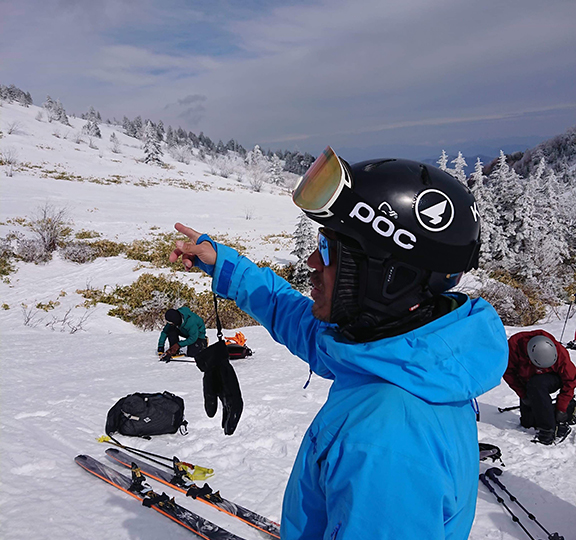
The sun is strong in Haruyama, so it's best to have slightly darker goggle lenses. Of course sunglasses are a must. Sunglasses with black lenses are also fine.
In spring, there is a risk of falling rocks and slipping, so be sure to wear a helmet. When hiking, wear a wide-brimmed hat to protect you from the sun.
A thin balaclava, which is different from a winter fleece, is also a good option for sun protection.
action diet
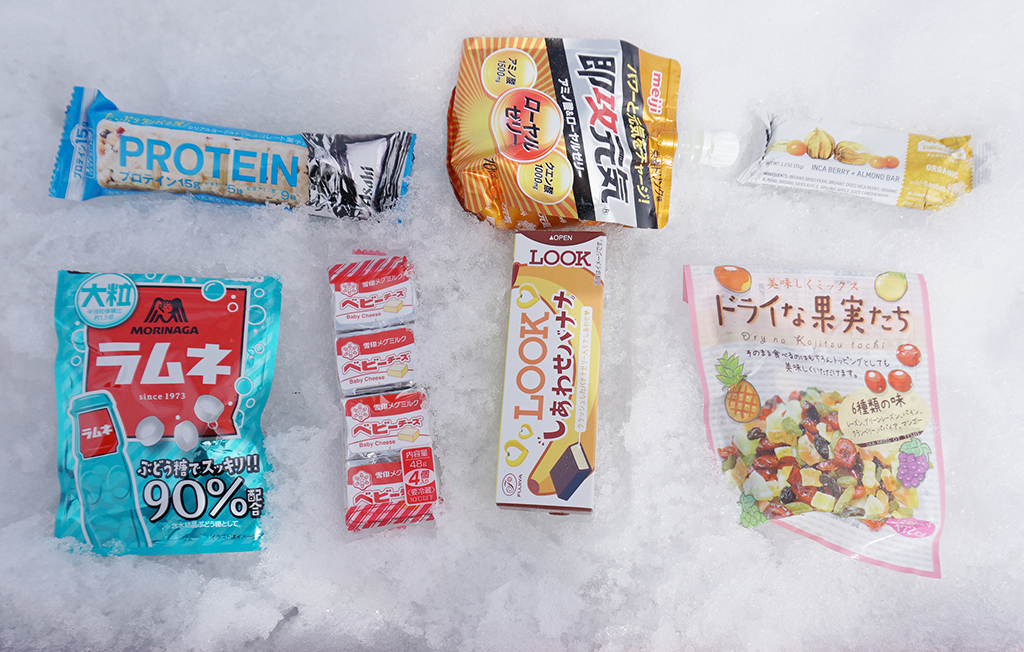
Action food varies depending on the mountain you go to, but considering that Spring Mountain is a long activity time and it is a long stretch, I recommend preparing a small amount of food that you can carry in your mouth once an hour. Low-bulk, highly nutritious, high-sugar and high-salt foods are also good choices.
Instead of fresh water, it is better to bring a sports drink that contains salt minerals, such as Aquarius or Pocari Sweat. This is because when you sweat, all the minerals come out of your body, so you should replenish them.
be careful as a precaution
In spring, the weather becomes milder and the snow conditions are easier to judge, so many people start to go out to the high mountains of 2,500m or more with snow. However, from April to Golden Week, there is still the possibility of heavy snowfall, and there are quite a few avalanche accidents during this period. Just because it's spring, it doesn't mean that anything is OK.
In terms of behavior, it is important to be more conscious of taking care of your body than in the middle of winter. There are many important points to take care of, such as drinking plenty of water because you sweat a lot, sugar to replenish your energy because you are going to be active for a long time, and sunburn prevention because the sunlight is very strong. If you prepare and go to the mountains with the mindset that the element of mountain climbing will be strong from spring to early summer, you will be able to keep the fun.
If you have backcountry experience or are unsure of your judgment in many ways, it's a good idea to take a professional guided tour.

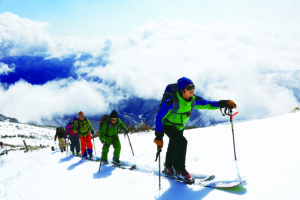
How to choose a guided tour
First, aim for the place you want to go and check if the guide club organizes a tour. Each guide club has its own area and mountains that it specializes in and is good at. Consider your backcountry experience and level of skating, and take a closer look at what the tour offers. What are the things and things you need, such as a tour that divides groups according to experience and level, a tour with a generous number of guides according to the guide ratio (balance between participants and the number of guides), and whether or not you can rent gear? Let's think about
At that time, it is a good idea to look at the guide club's homepage and past blogs to see if there are tour experience reports or how many years the tour has been conducted.
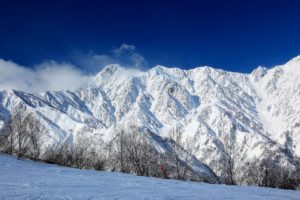
Finally, talk about my personal favorite Haruyama
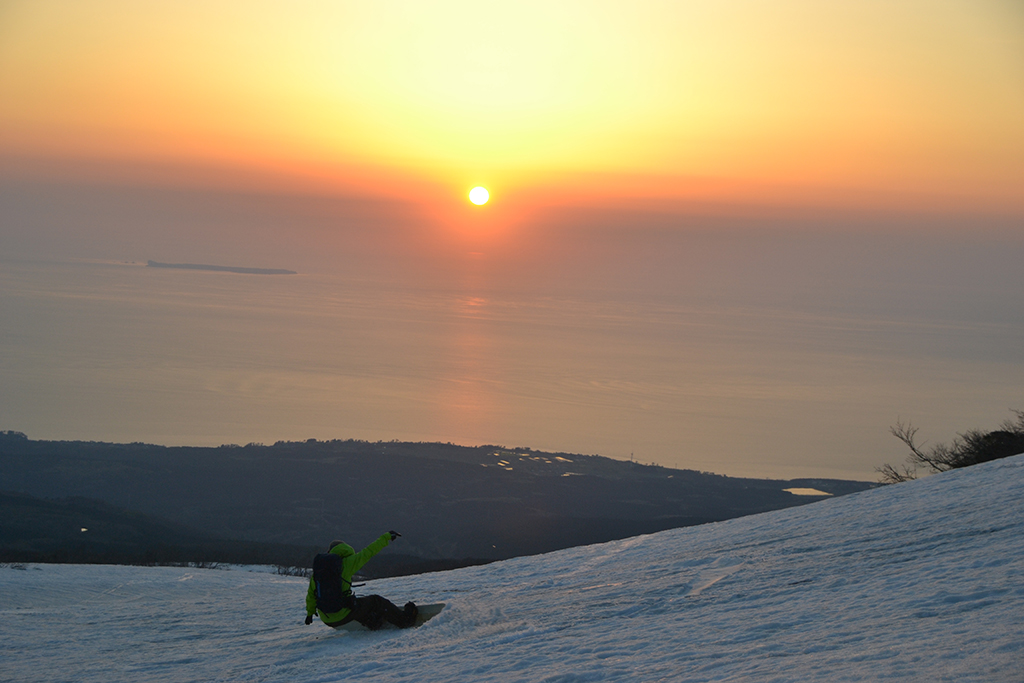
In spring, I often go to the mountains of Tohoku. I used to go to Tateyama a lot, but for the past six or seven years I've really liked Tohoku and have been going to Mt. Chokai, which straddles Yamagata and Akita prefectures. The roads open in time for Golden Week, and you have to drive to a certain high altitude and then walk from there, and the location is just amazing. The great appeal of Mt. Chokai is that you can ski while looking out at the Sea of Japan, as shown in the photo above. Because the mountain is conical, you can ski 360 degrees, and there are various entrances, so you can enjoy something different every day.
A feature of Tohoku is that there is plenty of remaining snow until late in the season, and Gassan's ski resorts are open until July, and you can ski even further into the backcountry.
You can go on long routes in Mt. Hakkoda that you wouldn't be able to do in the middle of winter until around Golden Week, and the same goes for Hachimantai. The Mt. Iwaki Skyline will also open during Golden Week, so you can take the bus there, climb up a little, ski, then pick up the bus and return to your car. At KinTouN Backcountry Guide, we provide guide services every year by staying in such places for about a week, staying in a car, and allowing customers to participate freely at any time.
Everyone gathers in the parking lot, drinks at night, goes up the mountain early the next morning and skis while enjoying the spring nature, and comes back down by noon. After that, we went to a hot spring, bought some ingredients at a local supermarket, and made a hotpot in the parking lot. I think Tohoku is a really fun place. Please join us this spring. ◆ Click here backcountry guide KinTouN tour schedule
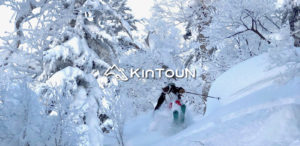
the person who taught me
KinTouN Backcountry Guide (KinTouN)
Kenichi Minegishi
[Main Guide Area] Kanetsu Area
[Profile]
Backcountry guide since 2003.
Hosts a members-only club and camp in an old folk house called Kaze no Tani in Yamakita Town in western Kanagawa Prefecture. Together with members connected through the backcountry, they are building campsites and playgrounds in the mountains using DIY methods. ``I want to ski on a natural snowy mountain just like skiing on the waves that are the energy of nature, and I want to climb the mountain with my own feet and ski the way I want.It's because of the risk that I felt freedom.'' [Qualifications]
・JMGA Ski Guide Stage II
